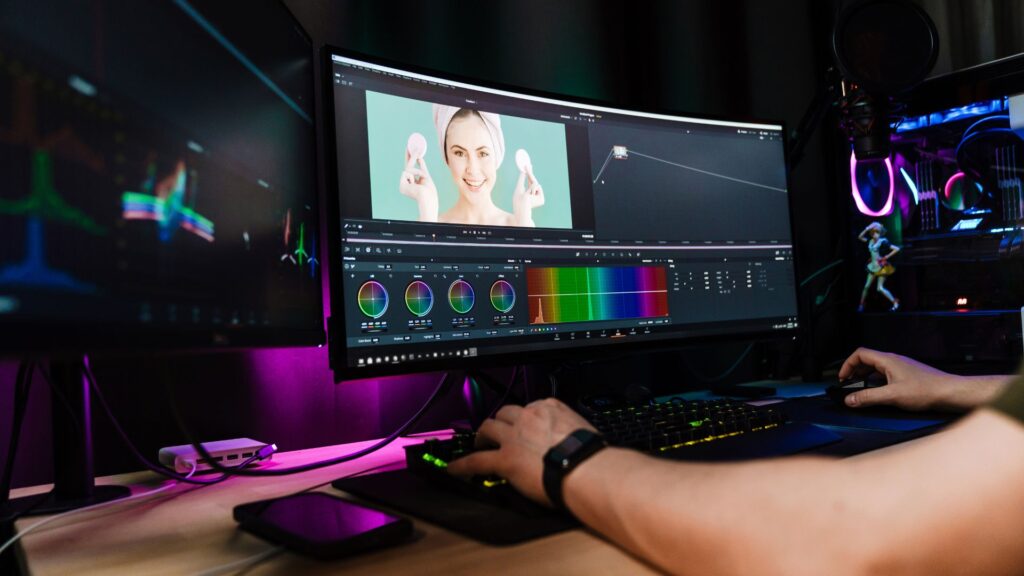In the world of photography, capturing the perfect shot is only half the battle. The other half lies in post-processing, where photographers bring their images to life through various adjustments, including color correction. Color correction is a crucial step in enhancing the visual appeal of your photos, ensuring that they accurately reflect the scene you captured. Adobe Photoshop is a powerful tool for this purpose, offering a wide range of tools and techniques to manipulate colors with precision. In this comprehensive guide, we’ll walk you through the basics of photo color correction in Photoshop, step-by-step, empowering beginners to elevate their images to the next level.
Understanding Color Correction
Before diving into Photoshop, it’s essential to understand the concept of color correction. Color correction involves adjusting the colors in an image to achieve a desired look or to correct any color inconsistencies. This process can include correcting white balance, adjusting saturation, tweaking hues, and more. The goal is to make the colors in your photo appear natural and visually pleasing.
Step 1: Import Your Image into Photoshop
To begin, open Photoshop and import the image you want to color correct. You can do this by clicking on “File” > “Open” and selecting your image from the file browser. Alternatively, you can drag and drop your image directly into the Photoshop workspace.
Step 2: Assess Your Image
Before making any adjustments, take a close look at your image and identify any color issues that need correction. Pay attention to areas where the colors appear off or unnatural. Common issues include incorrect white balance, color casts, dullness, or oversaturation.
Step 3: Correct White Balance
White balance refers to the overall color temperature of an image, which can affect the mood and tone. To correct white balance in Photoshop, go to “Image” > “Adjustments” > “Color Balance.” Here, you can adjust the levels of cyan/red, magenta/green, and yellow/blue to achieve the desired white balance. Experiment with the sliders until the colors in your image look more natural.
Step 4: Adjust Exposure and Contrast
Next, consider adjusting the exposure and contrast of your image to enhance its overall appearance. Go to “Image” > “Adjustments” > “Brightness/Contrast” or “Levels” to fine-tune the exposure and contrast settings. Increasing brightness can help brighten up dark areas, while adjusting contrast can make your image appear more dynamic.

Step 5: Fine-Tune Colors
Now it’s time to fine-tune the colors in your image. Photoshop offers several tools for this purpose, including the Hue/Saturation, Vibrance, and Selective Color adjustments. Experiment with these tools to enhance the vibrancy and richness of your colors while ensuring they remain natural-looking.
Step 6: Use Adjustment Layers
One of the key advantages of using adjustment layers in Photoshop is that they allow you to make non-destructive edits to your image. Instead of applying adjustments directly to the image layer, you can add adjustment layers that affect the layers beneath them. This gives you more flexibility and control over your edits, allowing you to easily tweak them later if needed.
Step 7: Work with Masks
Masks are another powerful feature in Photoshop that allow you to selectively apply adjustments to specific areas of your image. By using masks, you can target only the areas that need correction while preserving the rest of your image. Experiment with painting on masks using the Brush tool or creating precise selections to refine your color corrections.
Step 8: Final Touches
Once you’re satisfied with your color corrections, take some time to make any final adjustments to your image. This may include sharpening, noise reduction, or adding creative effects. Remember to save your work in the appropriate file format for your intended use, whether it’s for print or web.
Conclusion
Color correction is an essential skill for any photographer, and Adobe Photoshop provides powerful tools to achieve professional-looking results. By following this step-by-step guide, beginners can learn the basics of photo color correction and take their images to the next level. Experiment with different techniques and settings to find the style that best suits your vision. With practice and patience, you’ll soon become proficient in the art of color correction, elevating your photography to new heights.














